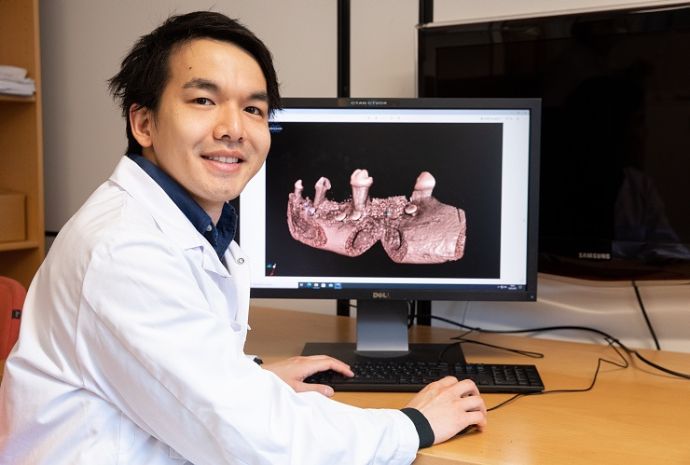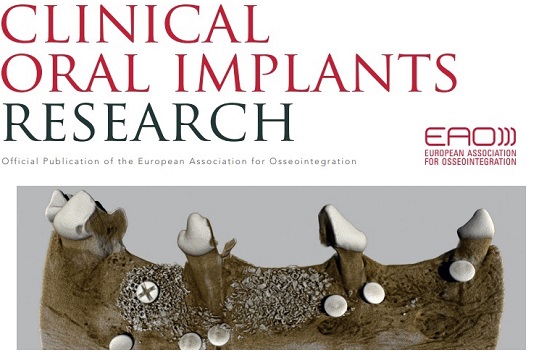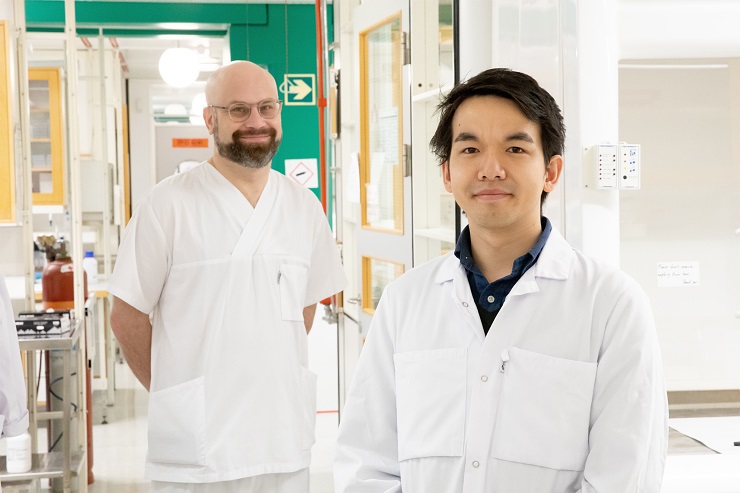It is rare that a research fellow gets the cover of a reputable scientific journal. But Minh Thieu did.

Photo: Marie Lindeman Johansen OD/UIO
Together with a research group consisting of Håvard Jostein Haugen, Javier Sanz-Esporrin, Mariano Sanz, Ståle Petter Lyngstadaas and Anders Verket, the prestigious front page was secured, with an article focusing on bone growth.
How to regenerate new bone is "The big question "at the Department of Biomaterials,
 where different approaches to this question are constantly addressed, and where titanium dioxide scaffolds play a crucial part.
where different approaches to this question are constantly addressed, and where titanium dioxide scaffolds play a crucial part.
- Even though bones heal, we know that large losses of bone tissue, which often is the case with periodontal disease, can lead to bone tissue being lost forever, Minh Thieu explains. It is a permanent loss that leaves the bone forever weakened, or in extreme cases completely destroyed. This is often a problem when, for example, a tooth is lost and the the jaw have resorbed for a long time, so that there is too little bone when you want to insert an implant.
In this first article by Minh Thieu, as a research fellow, the idea was to see if the bone cells would grow better, and make a new bone, if the scaffold was placed in an animal model when the healing process was complete.
To investigate this, parts of the jawbone were removed in an animal model. A mechanism that then immediately occurs is that the bone begins to heal where the trauma has been inflicted. The idea was then, to look at whether the effect of bone growth would be better, if the scaffold was inserted a time when the healing process was completed after 8 weeks.
-The experiment was carried out with two different lengths of time in the same model, Minh Thieu explains. A period that lasted 4 weeks and a period that lasted 12 weeks.
- What we found, was that there was growth of bone cells into the scaffolds, but not of sufficient quantity to proceed with this particular model, says Minh. However, what was still an interesting finding was that we observed that there was a larger bone growth in the part of the model that had been contained for the longest period.
--This tells us that, this is possibly a process that needs more time, which may be important for other studies in the future, Minh concludes.

Reference: Thieu, Minh Khai Le; Haugen, Håvard Jostein; Esporrin, Javier Sanz; Sanz, Mariano; Lyngstadaas, Ståle Petter & Verket, Anders (2021). Guided bone regeneration of chronic non-contained bone defects using a volume stable porous block TiO2 scaffold: An experimental in vivo study. Clinical Oral Implants Research. ISSN 0905-7161. . doi: 10.1111/clr.13708






